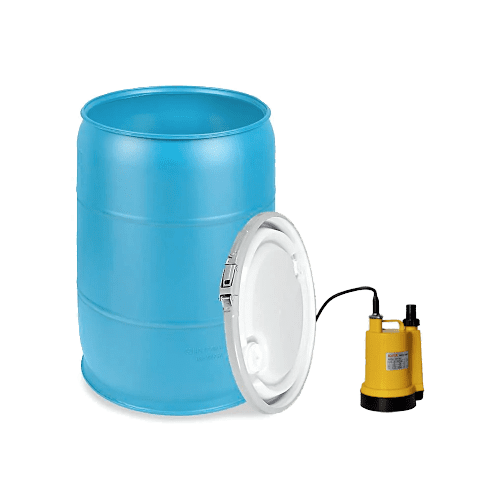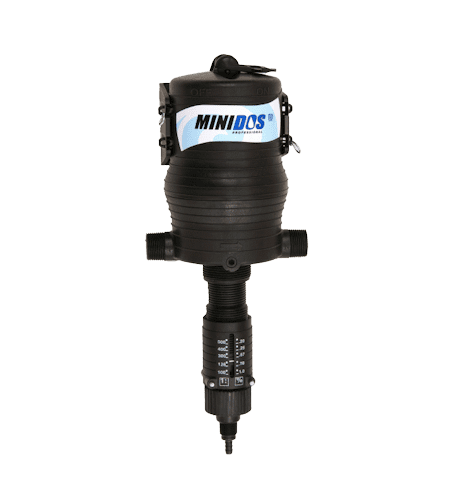Having decided what and when to feed your plants, you must now actually go about it. Like me, many of you opt with the standard, 1-gallon “milk jug,” as it has a convenient handle and a mouth that is pretty good for adding fertilizer concentrates or powders, as well as for pouring.
That’s great when your collection is small, but what happens as your “orchid addiction” really kicks in? Or asking the question another way, how many times are you willing to refill and remix that jug at each watering? Eventually, you will get fed up with it, so will need an alternative method of watering and feeding your collection, and there are a number of options, such as:
1) A larger watering container.
2) A pump-up type sprayer. They can range from about two-to-three gallons capacity up though 4- and to about 5 gallon rollers or backpack types, or larger stationary units. The hose-end nozzle can be adjusted from a fine spray for mounted plants, to a heavy stream for potted plants, and has the added advantage of allowing you to poke it down to the pot level, avoiding pockets of water on the leaves that can lead to bacterial- or fungal rot. Personally, I think such a sprayer is an essential tool for orchid growers, as you’re bound to need to apply insecticides at some point.

3) A siphon-type proportioner for your hose. You still have to mix up a gallon of concentrate, but as most are about a 16:1 ratio, that replaces 16 milk jugs. On the plus side, they’re relatively cheap, and can work at a range of flows, although a narrow one. If they are kept clean, they are pretty reliable, but they can clog and give different mixing ratios. Unfortunately, they won’t work well with narrow and/or long hoses (unless on the output end), won’t work at all with misting heads attached. The most common brand is the Dramm Syphonject:

4) A good quality hose-end sprayer – one that works on the same principal as the siphon types – is a good alternative in that they can produce a moderately large amount of fertilizer in a hand-held device. The Ortho Dial ‘n’ Spray is my personal recommendation, as it can be adjusted for a wide range of mixing ratios (1 teaspoon-, to 8 ounces-per-gallon) and once you’ve finished applying the product, you can pour the excess back into its original bottle.

NOTE: DO NOT bother with a cheap hose-end sprayer, as many of them work by injecting a small stream of water into the reservoir, pushing the concentrate into the output stream, meaning that the fertilizer concentrate decreases over time. If you cannot confirm that it injects via a siphon mechanism, don’t buy it.
5) A 30- or 55-gallon drum with submersible pump. The trick is to find a pump with enough pressure for the length of hose and hose-end restrictor you use. In this case, you’re replacing your gallon jug with a barrel. When I used this method, I found the Teel 1P809 pump from W. W. Grainger to be excellent, as its outlet is intended to accept a garden hose, and it has plenty of pressure. Drums may usually be obtained for free from a local car wash.

6) Chemical injector pump. These are good against the pressure of a long or narrow-diameter hose, but you’ll have to develop a calibration curve specific to the hose and nozzle combination(s) you will be using, making sure the spigot is wide open at all times so the flow is relatively constant.

7) Proportioning pumps. This is the “Cadillac” for the orchid grower. Manufactured by Dosmatic and Dosatron (we use and recommend the former), they are powered by the flowing water, work at all flow rates and pressures, can be set to a variety of mixing ratios and stay there once set. They are fairly expensive too, about $300-$350 new for the size an orchid grower is likely to need, but worth the investment, in my opinion.

Since originally writing this, a number of Chinese “knock-offs” of these metering pumps have hit the scene on Amazon.com. I have not used them myself, but several of may customers say they appear to be quite good.
